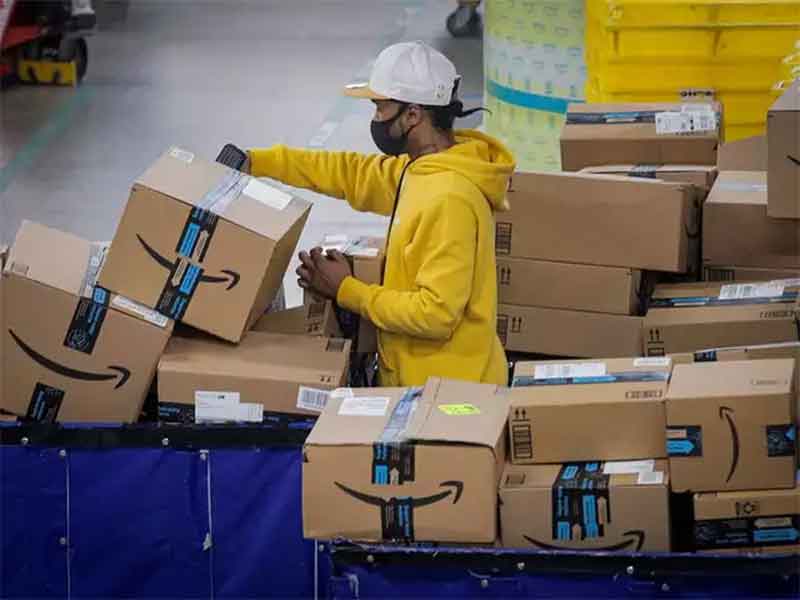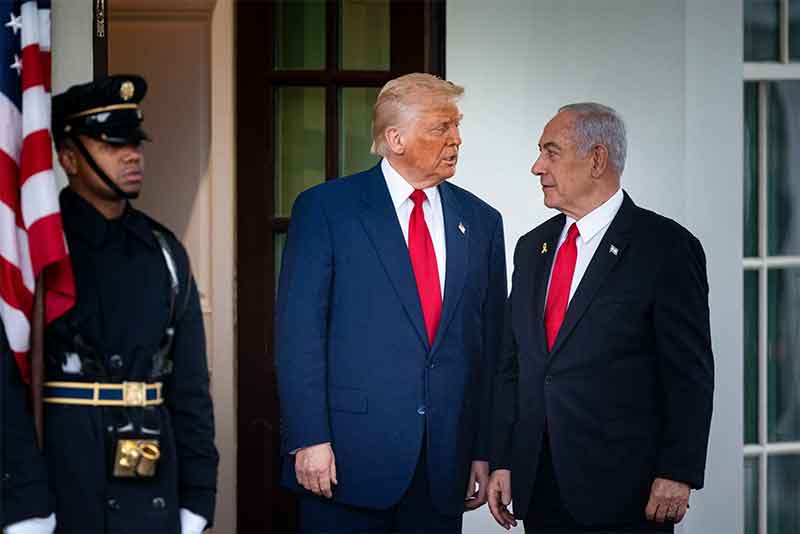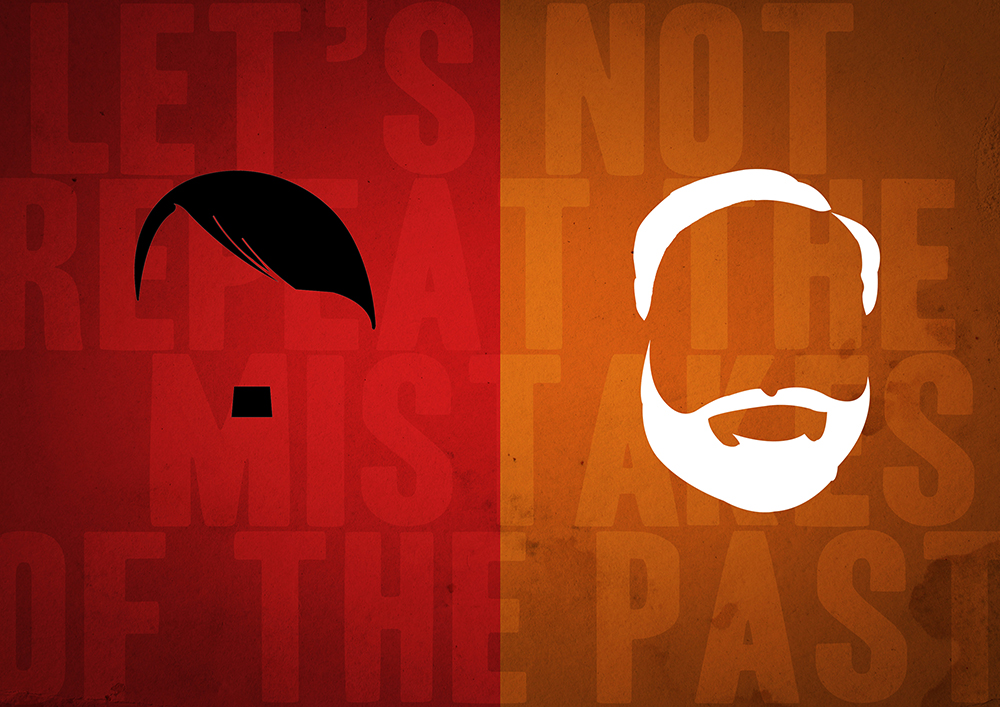
On August 21, Union Commerce Minister Piyush Goyal launched a scathing attack on the e-commerce giant Amazon’s Indian operations. He accused it of predatory pricing, violating regulations on foreign investment, buying up the country’s top lawyers, and causing huge social disruption by destroying small retailers. So fierce was his attack that it dominated media headlines, and led to speculation that foreign investment is now unwelcome in India. Is this, then, another example of the present Government’s ‘nationalism’?[1]
A closer look reveals a completely contrary picture.
The opening of India
At the start of this century, when foreign retail giants such as Walmart wished to set up chains of brick-and-mortar retail stores in India, they faced widespread opposition. The arguments against foreign direct investment (FDI) in the retail sector were summed up in the conclusions of the 2009 report of the Parliamentary Standing Committee on Commerce under the chairmanship of Murli Manohar Joshi:
1. ‘Modern retail’ would displace a large number of jobs in India’s existing retail sector, which employed 33 million or more, the next largest employer after agriculture.
2. Global retail chains would adopt predatory pricing tactics to wipe out domestic competition (small retailers).
3. Once global retail chains are established, they would be in a position to dictate prices both for buying wholesale, and for selling retail products.
4. Retailing itself cannot boost the GDP. Growth in the manufacturing sector needs to be increased for that purpose.[2]
These statements remain true and relevant even today. Nevertheless, after hectic lobbying by Walmart and other firms, the Congress-led government in September 2012 permitted 51 per cent foreign direct investment in multi-brand retail. (A multi-brand retail outlet sells goods of many brands, whether it does so through physical stores or online platforms.) A detailed study characterises the opening up to FDI in retail as “a classic case of large global corporations succeeding in influencing public policy of developing countries and putting the regulatory system to stupor with the backing of powerful home governments and exploiting the developing countries’ need for foreign capital.”[3]
The Bharatiya Janata Party, which traditionally enjoyed a large support base among small traders, declared in 2012 that
"The decision of the Congress led UPA government to allow FDI in multi-brand retail has drawn all round criticism and condemnation. In the name of ‘reform’, the government has in fact compromised the long-term national interest.... the Congress led UPA has buckled under foreign pressure. The decision is sure to have its impact on millions of small traders who are going to lose their jobs."[4]
Accordingly, the BJP’s 2014 election manifesto opposed FDI in multi-brand retail.
The digital route to opening India to FDI in retail
The real opening up of India to FDI in retail, however, has taken place precisely under the BJP government over the last decade; it merely took place through a different route. Rather than in the form of ‘brick-and-mortar’ stores, foreign investment in retail entered in the form of digital firms.
Amazon launched its India ‘marketplace’ in June 2013 on a small scale, at first selling only books. The following year, Amazon’s Jeff Bezos announced that the firm would be investing $2 billion in its Indian operations, and thereafter it has scaled up rapidly. Flipkart, the major ‘Indian’ rival to Amazon, was registered in Singapore. By 2015 it had raised over $2.3 billion in several rounds of funding from foreign investors such as Accel, Tiger Global, Softbank, Microsoft, eBay, Tencent, and others. Flipkart was launched in 2007, and grew rapidly after 2010 with the help of foreign investments. In 2018, Walmart bought Flipkart, and thus the two largest e-commerce firms in India were owned by two US multinationals.
The legal cover for this workaround was provided in March 2016, when the BJP government allowed 100 per cent FDI in e-commerce, on one condition: It drew a distinction between a “marketplace model”, which merely connects sellers to buyers, and an “inventory-based model”, which stocks inventories of goods and supplies them to buyers. The inventory-based model was prohibited, but the marketplace model was allowed.
Further, the Government stipulated that the marketplace model would be allowed strictly on a “business-to-business (B2B)” basis, and not “business-to-consumer (B2C)”. That is, e-commerce firms were restricted to offering a service to sellers, by connecting them with customers and facilitating their transactions. Thus the policy stated: “E-commerce marketplace may provide support services to sellers in respect of warehousing, logistics, order fulfillment, call centre, payment collection and other services.” However, marketplace e-commerce firms were not allowed to intervene to fix prices or provide refunds to customers. E-commerce firms were barred from allowing any single seller from supplying more than 25 per cent of the goods sold on their platforms (25 per cent itself is a very liberal ceiling).
Flagrant violation, lack of enforcement
These regulations could have posed a nuisance to Amazon and Flipkart if they had been enforced. They were simply not enforced.
In fact, Amazon and Flipkart both operate on an inventory-based, business-to-consumer model, with little attempt at concealment. Further, internal documents of Amazon (revealed by Reuters in 2021) showed that Amazon indirectly owned sizeable stakes in a handful of sellers who accounted for the overwhelming bulk of sales through its ‘platform’.[5] Amazon systematically promoted products sold by its partner firms over those sold by other sellers on its platform. The largest such partner firm was ‘Cloudtail’, co-owned by Amazon and Narayan Murthy (a founder of Infosys); another such was Appario, co-owned by Amazon with the Patni family. Similarly, a seller named WS Retail earlier accounted for 30-40 per cent of Flipkart’s sales till 2018. As Rahul Varman writes,
“[T]he reason for choosing such structures boils down to exercising tight control. Each big e-retail firm is actually not only a retailer in every sense of the word, but a very active retailer at that, one which decides everything from pricing to delivery to return policy. And they can have the kind of leash that they need on the selling process only if they control very tightly each of the critical decisions. It is simply impossible to run such a tight ship through an actual marketplace model with only third party sellers."[6]
After the Reuters exposure, Amazon was forced to close Cloudtail; but a number of ‘mini-Cloudtails’ are reported to have mushroomed on Amazon thereafter, staffed by the ex-employees of Cloudtail (and another similar firm, Appario, with which Amazon ended ties in 2023).[7] These new firms may not reveal any Amazon investment, but they function exactly as Cloudtail did. For example, Cocoblu Retail, headed by a former executive of Cloudtail, sells various commodities of the ‘Amazon Brand’, as in the advertisement below.

(Reproduction of an Amazon ad. Amazon placed this ahead of an ad for a higher-priced similar product from a rival firm.)
Similarly, while Flipkart ended ties with WS Retail in 2018, “concerns still linger that other preferred or ‘favoured’ sellers are taking [its] place.” [8]
Amazon, Flipkart and other firms have thus operated in open violation of the FDI regulations, even after allowing for the loopholes provided in the 2016 policy. They have been able to do this despite the fact that their competitors are also capitalists, ranging from small traders to medium and big manufacturers. The latter have the resources to pursue legal cases, and the political connections to lobby against e-commerce firms. In turn, Amazon and Flipkart have counter-lobbied and used their considerable resources. Thus we have witnessed a drawn-out struggle between the two sides, played out in different State institutions. The following events provide some glimpses of this tussle, which has so far gone in favour of Amazon-Flipkart:
E-Commerce Policy
— In February 2019, the Government issued a Draft National E-Commerce Policy. In June 2021 the Confederation of All India Traders (CAIT) said it had written to the Prime Minister urging the Government not to dilute the draft policy under any pressure. In August 2023, BJP leader Praveen Khandelwal, the head of CAIT, claimed that the release of the new E-Commerce Policy was imminent; but by October 2023 he complained that the finalisation of the Policy was being inordinately delayed, causing irreparable loss to lakhs of small traders. To date, more than five years after the draft policy was released in 2019, the Government has not finalised the policy.
At any rate, as the Committee on Digital Competition Law points out, the E-Commerce Policy would be “a policy and not a statutory instrument, [and so] its compliance will not be enforceable before a court of law, thus reducing its efficacy as a measure to regulate digital markets.”[9] (emphasis added)
CCI probe
— In 2019 the Delhi Vyapar Mahasangh, a group of smartphone traders, filed a complaint with the Competition Commission of India (CCI) against Amazon and Flipkart. In January 2020 the CCI began a probe into the two firms for four alleged violations: 1. exclusive launch of mobile phones; 2. promoting preferred sellers on their websites; 3. deep discounting practices; and 4. prioritising some seller listings over others.[10] Amazon and Flipkart approached the Karnataka High Court, and then the Supreme Court, in an unsuccessful attempt to prevent the CCI investigation. Finally, in August 2021, the Supreme Court rejected Amazon-Flipkart’s plea, and refused to stop the CCI investigation.
— In April 2022 the CCI carried out searches at the offices of Cloudtail and Appario, major sellers on Amazon, as well as on some of the top sellers on Flipkart and Meesho (another e-commerce platform). The raids were carried out in connection with the anti-competitive practices followed by these companies.
— In May 2024 the CCI completed its probe. Reportedly, the probe found Amazon and Flipkart to be violating anti-trust laws. But the report has not been made public. No action appears to have been taken on its basis as yet.
Enforcement Directorate
— In February 2021 Reuters revealed internal documents of Amazon India which showed systematic and large-scale evasion of Indian regulations regarding e-commerce. The Enforcement Directorate (ED) took cognisance of the matter and sought information from Amazon regarding its operations in the country. In fact, since 2015, the ED has been investigating both Amazon and Flipkart for violations of the policy regarding multi-brand retail in India. We are unable to find any recent news regarding the fate of this ED investigation.
It is not clear who is responsible for enforcing e-commerce FDI norms. Any violation of FDI norms is enforced by the Enforcement Directorate under the penal provisions of the Foreign Exchange Management Act, 1999. However, the obligations applicable to e-commerce entities are notified by the Department for Promotion of Industry and Internal Trade.[11] This ambiguity has proved useful to the e-commerce firms.
Bribery case
— In September 2021, the website The Morning Context reported the allegation of a whistleblower, that Amazon’s legal representatives were bribing Indian officials. Amazon India responded by declaring it had “zero tolerance” for corruption. It placed a senior corporate counsel, Rahul Sundaram, on leave, and ordered an internal investigation.[12] After the news of the bribery allegation broke, CAIT pointed out that Amazon India had spent Rs 8,546 crore on “legal fees” in the financial years 2018-19 and 2019-20, suggesting that these large sums were used for bribery. Amazon clarified that, in fact, it had spent only Rs 3,688 crore on “legal and professional fees” in those two years; and this amount included “other professional services such as outsourcing, tax consultants, customer research and logistics support.” Even this lower figure is a staggering sum, nearly 20 per cent of Amazon revenues for those two years.
While the Central Bureau of Investigation (CBI) is meant to investigate cases of bribery and governmental corruption, it does not seem to have opened an investigation into this case, despite calls by trader bodies for it to do so. We are unable to find any subsequent news about the investigation of the charge of bribery, either by Amazon or the Government.
During this entire period, Amazon and Flipkart have continued to grow, incurring losses (‘burning cash’) in order to expand their market. In the five years 2018-19 to 2022-23, the two firms made sales totalling over Rs 124,000 crore, and incurred EBITDA losses of nearly Rs 30,000 crore in the process. (‘EBITDA’ refers to ‘earnings before interest payments, taxes, depreciation and amortisation of debt’. After accounting for these heads, the actual losses would be considerably larger.)

EBITDA: Earnings before interest, taxes, depreciation and amortisation. Source: J M Financial, Deep Dive – From Clicks to Cash: Profitability Paradigm in E-Commerce, February 21, 2024.
Goyal’s rhetoric…
It is against this background that, on August 21, 2024, Union minister for commerce Piyush Goyal launched a scathing attack on Amazon and Flipkart. He declared that, when Amazon said it was going to invest a billion dollars in India, it was merely in order to cover their losses. These losses, he said, were on account of predatory pricing, i.e., deliberately pricing at a loss in order to drive competitors out of the market.
"If you make Rs 6,000 crore loss in a year that does not smell of predatory pricing to any of you? What did that loss come on there? After all, an e-commerce platform, they are not allowed to do B2C. The ecommerce platform legally cannot do Business-to-Consumer. They create entities where Indians contribute to making those entities.... They get caught so they start closing down those entities. That’s part two of the story. But they only re-route all the business through an entity to show that it’s Business-to-Business. But reality is all of you buy on these platforms don’t you? How do you buy? B2C is not allowed on these platforms. How are they doing it?“
Referring to earlier revelations about Amazon’s “legal and professional fees”, Goyal remarked sarcastically: “They paid a thousand crore to professionals…. I’d love to know which chartered accountants, professionals, lawyers get a thousand crore. Unless you are paying all the top lawyers to block them so that nobody can fight a case against you.”
The Minister made these damning remarks while releasing a research report by the ‘NGO’ Pahle India, titled Assessing the Net Impact of E-Commerce on Employment and Consumer Welfare. The report (which is indeed a travesty of economic analysis[13]) claims that “E-commerce has been a key driver of employment generation in India”. Goyal dismissed the report as agenda-driven, and remarked:
"I don’t see it as a matter of pride that half our market could be driven by e-commerce 10 years from now. It’s a matter of concern.... Are we going to cause huge social disruption with this massive growth of e-commerce?"
Goyal’s dramatic attack immediately dominated the headlines on every media outlet. The social media were filled with admiration of his brave stand. Commentators in the business media feared that foreign investors may be driven away. Small retailers lavished praise on the Commerce Minister.
… and actual conduct
However, on the following day (August 22, 2024), Goyal changed his tone dramatically:
We want online to come here. We want to invite them to serve all of you. Online has tremendous benefits. Even online commerce, e-commerce, has tremendous benefits. It has the benefit of convenience. It has the benefit of speed. It is giving you comfort in your homes. Many benefits. What the government, what the country only desires is fair play, is honesty for the customer, honesty to the supplier of goods and services and to ensure that our people also have a fair chance to compete against such online businesses. We want to encourage online to grow. Not at all any intention of the Government to stop online.[14]
In fact, Goyal has been Commerce Minister for the last five years, since 2019. In that role he has presided over the rapid rise of Amazon, Flipkart, and other foreign firms, and the paralysis of the concerned Government agencies. This has not prevented Goyal from liberal use of nationalist rhetoric from time to time; indeed, in an almost identical outburst three years ago, he berated the e-commerce giants for “blatantly flouting” the law of the land, engaging in predatory pricing, grabbing market share from small retailers and destroying employment.[15] In August 2021, when the Supreme Court refused to stay a CCI investigation against Amazon and Flipkart, Goyal even invoked the Quit India movement of 1942.[16]
Sabre-rattling apart, Goyal has taken no effective action against these firms’ violations over the last five years. Meanwhile millions of small retailers have lost a share of their markets, or even shut shop entirely. As the Committee for Digital Competition Law itself notes,
"Investigations into incumbent players under the Competition Act, which begin after a contravention has occurred, are resource-intensive and time-consuming. In the meanwhile, the market may irreversibly tip in favour of the incumbent and consequently drive out competitors. The harm thus caused is irremediable ex-post facto."[17]
The loss of livelihoods in traditional retail is not on account of the superior efficiency of e-commerce. After all, the leading e-commerce firms are running at a heavy loss. It is only once they have displaced the competition through predatory pricing that they can set about making profits. It is thus financial clout that explains the growth of the FDI firms in e-commerce.
Subscribe to Our Newsletter
Get the latest CounterCurrents updates delivered straight to your inbox.
Even as the BJP-led government has allowed Amazon, Flipkart, and other FDI firms to carry on e-commerce in violation of the law, the best-publicised opponent of FDI retail firms, the CAIT, is headed by a BJP leader, Praveen Khandelwal. In the 2024 Parliamentary elections, the BJP gave Khandelwal a ticket, and he is now a Member of Parliament. In this fashion, both sides of the debate have been occupied by the BJP – and sometimes by Piyush Goyal all on his own.
[1] See the series of articles on this blog starting with “India’s ‘New Era’ and Western Imperialism in 2023”, https://rupeindia.wordpress.com/2024/01/17/indias-new-era-and-western-imperialism-in-2023/
[2] Anirudh Barman, “Report Summary: Standing Committee on Commerce Report on FDI in Retail Sector
(June 2009)”, PRS Legislative Research, June 9, 2009.
[3] K.S. Chalapati Rao and Biswajit Dhar, “Evolution of India’s MBRT FDI Policy”, Institute for Studies in Industrial Development (ISID), 2016.
[4] BJP booklet on FDI in retail, October 2012,
[5] Rahul Varman, “Recent Amazon Revelations: What do they tell us about the ongoing farm protests?”, March 2, 2021, https://rupeindia.wordpress.com/2021/03/02/recent-amazon-revelations-what-do-they-tell-us-about-the-ongoing-farm-protests/
[6] Rahul Varman, Behind the Hype of E-commerce, Aspects of India’s Economy no. 65, https://rupe-india.org/old-site/65/part2.html
[7] Pranav Balakrishnan and Digbijay Mishra, “‘Mini-Cloudtails’ mushroom on Amazon after largest seller shuts down”, Economic Times, August 15, 2022.
[8] Simon Lobo, “Amazon, Flipkart oppose ex-ante competition regulations in India,”, Medianama, March 19, 2024. https://www.medianama.com/2024/03/223-amazon-and-flipkart-oppose-ex-ante-competition-regulations-in-india/
[9] Report of the Committee on Digital Competition Law (CDCL), February 2024, p. 43.
[10] Sarvesh Mathi, “Flipkart, Amazon challenge Karnataka HC order on antitrust probe: Report”, Medianama, June 17, 2021.
[11] Report of the CDCL, p. 38.
[12] Kritti Bhalla, “The murky case of bribery, allegedly on behalf of Amazon, has many unanswered questions”, Business Insider India, September 30, 2021.
[13] Only a summary of the report is available on the internet. However, the report assesses the impact of e-commerce on employment by looking at persons employed per online vendor vs. persons employed per offline vendor, instead of looking at persons employed per a specified volume of sales. Since traditional retailers are generally small family-run businesses, the jobs per unit would be small, but the jobs per Rs one lakh sales would be much higher than for e-commerce businesses.
[14] “A day after slamming Amazon and other e commerce platforms, Minister Piyush Goyal takes U turn”, Moneycontrol, August 23, 2024.https://www.youtube.com/watch?v=EuZhoJEHcIs
[15] For example, Piyush Goyal on June 28, 2021: “Unfortunately, many of these large e-commerce companies have come into India and very blatantly flouted the laws of the land in more ways than one…. [T]hey clearly — the American ones — and I can see a little bit of arrogance in their ability to finance large amounts of money in the initial stages to try and capture the Indian market… The song and dance was being made for investing a billion dollars, but that company incurred a loss of billion dollars in the previous two years….. [T]hey were just funding their losses…. They jolly well had to invest because they use the money to do predatory pricing, to subsidise the product, and capture a larger share of the market to the detriment of the smaller retailer and shops… So, very clearly, their irregular practices are the cause of their discomfort if any; they should have submitted to the requirements of the Indian law…. We, in India, have nearly 60 million mom-and-pop stores spread across the country in small and big towns and villages. The strength of money power and tech and their ability to sustain for a long period of time does pose a risk to nearly 100 million people who are engaged in one form or the other through the small retail stores across the country. — Aihik Sur, “Commerce and Industry minister Piyush Goyal comes down heavily on e-commerce companies”, Medianama, June 29, 2021 https://www.medianama.com/2021/06/223-piyush-goyal-e-commerce-3/
[16] Reuters, “Piyush Goyal welcomes SC decision on Amazon Flipkart ‘on the day of Quit India’”, Business Today, August 11, 2021.
[17] Report of the CDCL, p. 92.
Originally published in RUPE India
















































